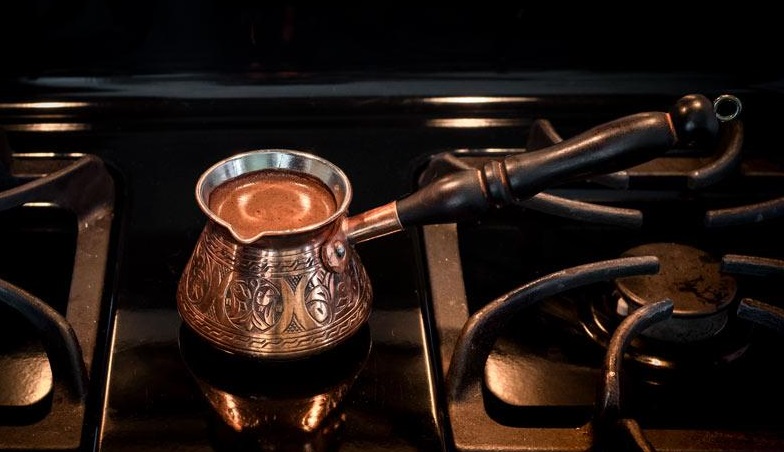
Turkish coffee isn’t just a drink; it’s a unique cultural experience. Steeped in tradition, this brewing method dates back centuries, offering a taste that’s as rich in flavor as it is in history. Unlike other coffee preparations, Turkish coffee is known for its fine grind, unfiltered nature, and the special technique used to brew it, often right on the stove. This method creates a coffee that’s intense, aromatic, and deeply satisfying, offering a glimpse into a storied cultural practice that continues to thrive today.
Key Takeaways
- Coffee-to-Water Ratio: Getting this right is crucial for the perfect cup of Turkish coffee. Too much water dilutes the flavor, while too little makes it overly strong.
- Fine Grind: The grind of the coffee beans should be as fine as powder, which is key to the distinctive texture and taste of Turkish coffee.
- Avoid Boiling: To preserve the coffee’s unique qualities, especially the signature foam, never let it boil. Just simmer it enough to extract its full flavor.
- Serving Suggestions: Serve Turkish coffee with water to cleanse the palate and Turkish delights for a sweet complement, enhancing the overall experience.
Ingredients and Equipment
- Ingredients: All you need is water, finely ground Turkish coffee, and sugar if you prefer a sweeter taste. The coffee should be ground to a fine powder, much finer than what you’d use for other brewing methods.
- Equipment: The star of the show is the ‘cezve’ or ‘ibrik,’ a special Turkish coffee pot, typically made of copper or brass. This pot is essential for authentic Turkish coffee preparation, designed to maximize flavor extraction and create the coffee’s characteristic foam.
Preparing the Coffee
Making Turkish coffee is an art that combines simplicity with a touch of tradition. It’s a process that requires attention and care, but once you master it, you’ll be brewing cups that resonate with history and flavor. Let’s walk through the steps, ensuring we focus on what truly matters: precision and patience.
Step 1: Measure Your Ingredients
Start with cold, filtered water. Use your Turkish coffee cup (fincan) to measure the water – one cup of water per serving. Then, for each cup, add one heaping teaspoon of finely ground Turkish coffee. If you like your coffee sweet, now’s the time to add sugar – the amount is up to you.
Step 2: Combine in the Cezve
Take your cezve and pour in the water, coffee, and sugar. Stir the mixture gently just until everything is well combined. This initial stir is crucial for dissolving the sugar and integrating the coffee evenly into the water.
Step 3: Heat it Up
Place the cezve on your stove over low to medium heat. Patience is key here. You want the coffee to heat slowly, which encourages the formation of foam, a signature characteristic of Turkish coffee. Watch closely – the transformation is part of the experience.
Step 4: Monitor the Foam
As the coffee heats, a dark foam will begin to form. This is a good sign. It means flavors are concentrating and your coffee is developing its characteristic richness. Once the foam starts rising to the top, you’re close to the crucial moment.
Step 5: Before the Boil
Here’s where precision matters most. Just before the coffee boils – indicated by the foam rising to the brink of spilling over – remove the cezve from the heat. If you’re serving multiple cups, spoon a bit of foam into each cup now. This ensures that everyone gets a taste of that delightful froth.
Step 6: Final Pour
Return the cezve to the heat for a few more seconds to finish the brew, then pour the coffee into the cups, distributing the remaining foam. The coffee grounds will settle, which is exactly what you want.
Step 7: Serve and Savor
Serve your Turkish coffee with a glass of water and perhaps a sweet treat on the side. Remember, Turkish coffee is meant to be sipped slowly, allowing you to appreciate its full flavor and aroma.
Cooking Process
When brewing Turkish coffee, the magic happens on a low flame. This isn’t just a brewing method; it’s a ritual, a slow dance that brings out the best in your coffee. The low heat is essential—it allows the coffee to extract gradually, developing a symphony of flavors and that all-important foam on top.
Visual Cues: Keep an eye on the coffee. As it warms, a ring of dark foam will form, slowly expanding and rising. This is your cue that the brew is progressing perfectly. Once this foam reaches the rim, it’s time to act swiftly to prevent it from boiling over, which would disrupt the delicate balance of flavors and texture.
The foam is your friend here. It’s not just about aesthetics; it encapsulates the essence of the coffee, holding in the flavors and aromas. By carefully managing the heat, you ensure that this foam forms just right, enhancing the coffee’s body and taste.
Serving Turkish Coffee
Serving Turkish coffee is as much an art as brewing it. Presentation matters. Once poured, the coffee should be allowed to rest for a moment, letting the grounds settle to create a clear distinction between the rich liquid and the sediment.
Accompaniments: True to tradition, Turkish coffee comes with a glass of water and something sweet, like Turkish delight. The water is a palate cleanser, a way to prepare your taste buds for the intense coffee. The sweet treat? It’s the perfect counterbalance to the robust coffee, a dance of flavors that complements the experience.
Ceremony: When serving, remember it’s about creating an experience. Use small, traditional cups that encourage slow sipping, allowing the drinker to savor each taste. And when you serve, do so with care and respect, honoring the tradition and the effort that went into creating this unique beverage.
Alternative Methods and Tips
Don’t have a traditional cezve? No worries! You can still enjoy Turkish coffee using a small saucepan. The process remains largely the same: mix your water, finely ground coffee, and sugar, then heat slowly. The key is the low heat and patience, allowing the coffee to foam up without boiling. This method might not give you the exact foam or intensity as the traditional way, but it’s a close and enjoyable approximation.
Tips for Perfection:
- Always start with cold water, which helps with the gradual extraction of flavors.
- Even without a cezve, stirring the coffee initially helps dissolve the sugar and evenly distributes the coffee.
- Watch for the foam to rise, then remove from heat momentarily before finishing your pour, just like with the traditional method.
Common Mistakes to Avoid
Turkish coffee might seem straightforward, but there are pitfalls to watch out for:
1. Overheating: The most common blunder is applying too much heat, leading to a boil. This can make the coffee bitter and ruin the delicate foam. Low and slow is the mantra.
2. Stirring While Heating: Resist the urge to stir once it’s on the stove. Stirring after the initial mix can break the foam and affect the brew’s consistency.
3. Skipping the Settle: After pouring, give the coffee a minute to allow the grounds to settle. Drinking too soon can lead to a mouthful of coffee grounds.
4. Wrong Grind Size: Using a grind that’s too coarse or too fine can greatly affect the taste and texture. Aim for a powder-like consistency for that authentic Turkish coffee experience.
FAQs
Can I make Turkish coffee without an ibrik?
Absolutely! While a traditional cezve or ibrik is ideal, a small saucepan can work in a pinch. The key is the technique—low heat, careful monitoring, and not stirring once it’s on the heat. You’ll still get a delightful cup of Turkish coffee, just with a slight variation in the ritual.
How do I adjust sugar levels in Turkish coffee?
Sugar is a personal preference in Turkish coffee. Add it at the beginning with your coffee and water, adjusting the amount to your taste. Remember, the sugar integrates best when added before heating, creating a harmonious blend as the coffee brews.
Final Thoughts
Turkish coffee is more than just a beverage; it’s a cultural gem that invites you to slow down and savor the moment. By mastering the stovetop method, you not only get a rich, flavorful cup of coffee but also partake in a timeless tradition. Whether you have the traditional tools or opt for a simple saucepan, the essence of Turkish coffee—its intensity, foam, and ritual—remains intact. Embrace the process, experiment with your preferences, and enjoy a coffee experience that’s steeped in history and rich in flavor.









